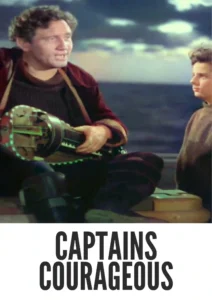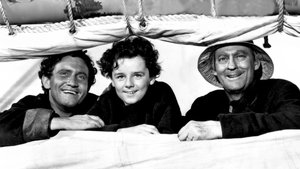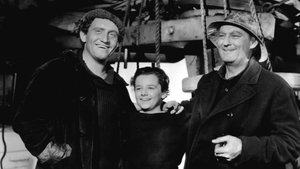Contact: info@alwanfilm.com
Video Sources 0 Views
- Watch trailer
- Captains Courageous


Synopsis
Table of Contents
ToggleReview: Captains Courageous 1937 Colorized – A Stirring Tale of Redemption and Adventure

Introduction
“Captains Courageous” (1937) stands as a timeless classic, weaving a captivating narrative of redemption and adventure set against the backdrop of the high seas. In this review, we’ll delve into the significance of this early colored film, exploring its impact on audiences and its enduring legacy in the realm of maritime drama.
Check The Full Colorized Movies List
Check Our Colorized Movies Trailer Channel
Understanding Captains Courageous 1937 Colorized: Director, Cast, and Genre
Directed by the visionary Victor Fleming, “Captains Courageous” (1937) showcases his skill in crafting compelling narratives that resonate with audiences of all ages. The film features a stellar cast, including Spencer Tracy, Freddie Bartholomew, and Lionel Barrymore, whose performances breathe life into the richly drawn characters that populate the story. Blending elements of adventure, drama, and coming-of-age, “Captains Courageous” (1937) transports viewers to a world of danger and discovery on the open ocean.
Exploring the World of Captains Courageous 1937 Colorized: Plot and Characters
At its core, “Captains Courageous” (1937) follows the journey of a spoiled young boy, played by Freddie Bartholomew, who learns the true meaning of courage and resilience after being rescued by a group of hardened fishermen. As he adapts to life aboard a fishing vessel, he forms a bond with the gruff yet compassionate captain, portrayed by Spencer Tracy, and discovers the importance of friendship, loyalty, and selflessness in the face of adversity. Along the way, he encounters a colorful cast of characters who help shape his worldview and teach him valuable lessons about life, love, and the pursuit of happiness.
The Art of Film Colorization
Film colorization serves as a transformative tool that enhances the visual experience of classic movies, breathing new life into timeless stories and captivating audiences with vibrant hues. By digitally adding color to black and white films, colorization allows viewers to immerse themselves in the rich tapestry of cinematic worlds, exploring every nuance and detail with fresh eyes and renewed appreciation.
Early Colored Films: A Brief History
The history of colored films traces its roots back to the early days of cinema, with filmmakers experimenting with various techniques to add color to their creations. From hand-tinted frames to early Technicolor processes, the evolution of colored film has been marked by innovation and ingenuity, paving the way for the development of modern colorization techniques that continue to captivate audiences to this day.
Captains Courageous 1937 and Its Early Colored Version
The decision to release “Captains Courageous” (1937) in a colorized format was met with both excitement and trepidation. While some welcomed the opportunity to experience the film in vibrant color, others expressed concerns about the potential impact on its visual aesthetic. Nevertheless, the early colored version of “Captains Courageous” (1937) offers viewers a fresh perspective on the timeless tale of courage and redemption, enhancing its emotional resonance and captivating audiences with its luminous beauty.
The Debate Over Film Colorization
The debate over film colorization continues to divide audiences and critics alike, with proponents praising its ability to breathe new life into classic movies and introduce them to a new generation of viewers, while detractors argue that it compromises the artistic integrity of the original work and diminishes its historical significance. As the debate rages on, filmmakers and audiences alike are left to ponder the merits and drawbacks of colorization in the ever-evolving landscape of cinema.
Examining Captains Courageous 1937 as an Early Colored Film
As with any colorized classic, the impact of colorization on “Captains Courageous” (1937) is a matter of personal interpretation. Some may argue that it enhances the film’s visual appeal and immerses viewers in its world, while others may feel that it detracts from the stark beauty of the original black and white version. Regardless of one’s stance on the issue, there’s no denying the enduring power of “Captains Courageous” (1937) as a timeless maritime drama that continues to capture the hearts of audiences around the world.
Influence and Legacy: Captains Courageous 1937’s Impact on Cinema
“Captains Courageous” (1937) has left an indelible mark on the world of cinema, inspiring countless filmmakers and captivating audiences with its timeless tale of courage and redemption. From its unforgettable performances to its sweeping cinematography, the film continues to resonate with viewers of all ages, reaffirming its status as a beloved classic of the maritime drama genre.
Director’s Cinematic Legacy: Beyond Captains Courageous 1937 Colorized
Victor Fleming’s influence extends far beyond “Captains Courageous” (1937), with a diverse body of work that continues to captivate audiences around the globe. From “Gone with the Wind” to “The Wizard of Oz,” Fleming’s films are celebrated for their epic scope, emotional depth, and timeless themes, solidifying his legacy as one of the preeminent directors of Hollywood’s Golden Age. Through his groundbreaking work, Fleming has left an indelible imprint on the world of cinema, inspiring generations of filmmakers to follow in his footsteps.
Themes Explored in Captains Courageous 1937 Colorized
“Captains Courageous” (1937) explores a myriad of themes, from the transformative power of courage to the bond between father and son, and the resilience of the human spirit in the face of adversity. Through its richly drawn characters and poignant storytelling, the film invites viewers to ponder the complexities of the human condition and the enduring strength of the human heart. As audiences immerse themselves in the world of “Captains Courageous” (1937), they are reminded of the universal truths that bind us together and the timeless lessons of courage, compassion, and sacrifice that continue to resonate with audiences of all ages.
Reception and Controversy Surrounding Captains Courageous 1937 Colorized
Upon its release, “Captains Courageous” (1937) received widespread critical acclaim, with many praising its heartfelt performances, sweeping cinematography, and timeless storytelling. However, the decision to release the film in a colorized format sparked debate among purists, reigniting the age-old discussion surrounding film preservation and artistic integrity. Despite the controversy, “Captains Courageous” (1937) remains a beloved classic that continues to resonate with audiences of all ages, reaffirming its status as a timeless masterpiece of the maritime drama genre.
Where to Watch Captains Courageous 1937 Colorized Online
For those eager to experience the timeless magic of “Captains Courageous” (1937), the film is readily available on popular streaming platforms such as Netflix, Amazon Prime, and Hulu. Whether you choose to watch it in its original black and white format or the early colored version, “Captains Courageous” (1937) promises to transport you to a world of adventure and discovery on the high seas, where the spirit of courage and redemption shines brightest in the darkest of times.
FAQs About Captains Courageous 1937 Colorized
Q: Is “Captains Courageous” (1937) based on a true story? A: Yes, “Captains Courageous” (1937) is based on the 1897 novel of the same name by Rudyard Kipling, which tells the story of a spoiled young boy who learns the value of hard work and perseverance after being rescued by a group of fishermen.
Q: Who are the main actors in “Captains Courageous” (1937)? A: “Captains Courageous” (1937) features an ensemble cast led by Spencer Tracy, Freddie Bartholomew, and Lionel Barrymore, whose performances bring depth and emotion to the richly drawn characters that populate the story.
Q: What awards did “Captains Courageous” (1937) win? A: “Captains Courageous” (1937) won several Academy Awards, including Best Actor for Spencer Tracy and Best Director for Victor Fleming. Additionally, the film received widespread critical acclaim for its heartfelt performances, sweeping cinematography, and timeless storytelling.
Q: Why was “Captains Courageous” (1937) released in a colorized format? A: The decision to release “Captains Courageous” (1937) in color was made to introduce the film to a new generation of viewers and enhance its visual appeal for modern audiences. While the choice to colorize the film sparked debate among purists, it ultimately allowed “Captains Courageous” (1937) to reach a wider audience and ensure its continued relevance in the annals of cinematic history.
Conclusion
“Captains Courageous” (1937) remains a testament to the enduring power of cinema to inspire, entertain, and provoke thought. Whether viewed in its original black and white format or the early colored version, the film continues to captivate audiences with its timeless tale of courage and redemption on the high seas. So, whether you’re a seasoned cinephile or a casual moviegoer, take a moment to revisit “Captains Courageous” (1937) and experience the magic of the open ocean as never before.












